The Great Lakes region boasts some of North America’s most spectacular landscapes, combining freshwater seas with pristine forests, historic lighthouses, and charming coastal towns. These five massive lakes—Superior, Michigan, Huron, Erie, and Ontario—contain over 20% of the world’s surface freshwater and offer visitors endless opportunities for adventure, relaxation, and cultural exploration. The shorelines of these inland seas stretch for thousands of miles across eight U.S. states and the Canadian province of Ontario, creating diverse destinations with their unique character.
Here is a list of 15 must-visit places along the Great Lakes that showcase the region’s natural beauty, rich history, and distinctive charm.
Mackinac Island
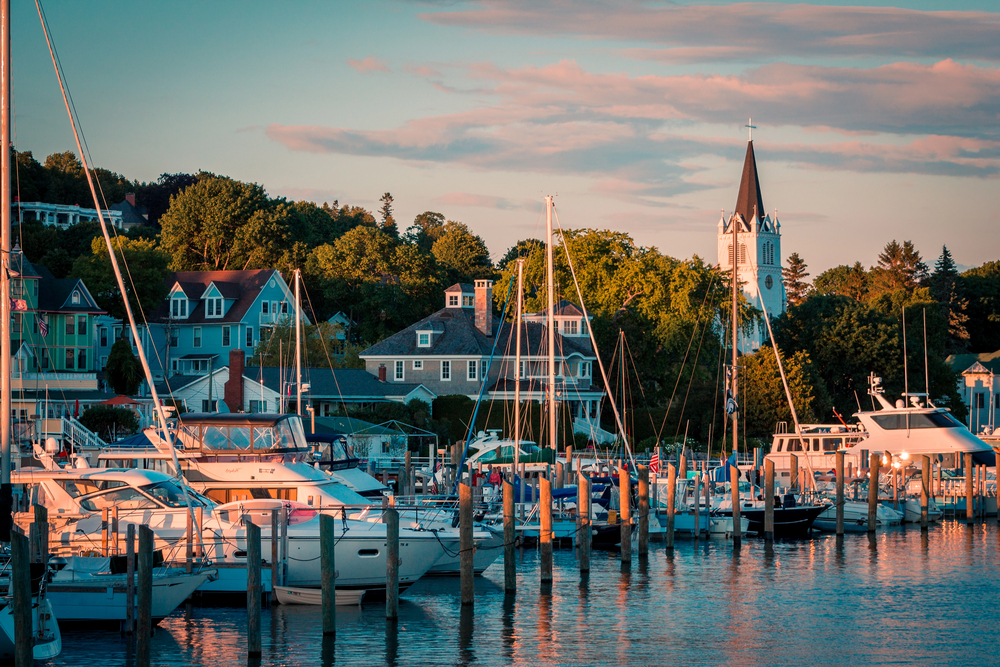
Located in Lake Huron between Michigan’s Upper and Lower Peninsulas, this car-free island feels like stepping back in time. Horse-drawn carriages clip-clop down streets lined with Victorian cottages and grand hotels. The famous Grand Hotel, with its sprawling 660-foot porch, has welcomed visitors since 1887—including five U.S.
presidents and countless celebrities seeking the island’s peaceful atmosphere. Don’t miss cycling the 8-mile road that circles the island or sampling the renowned fudge made fresh in downtown shops that have perfected their recipes over generations.
Sleeping Bear Dunes
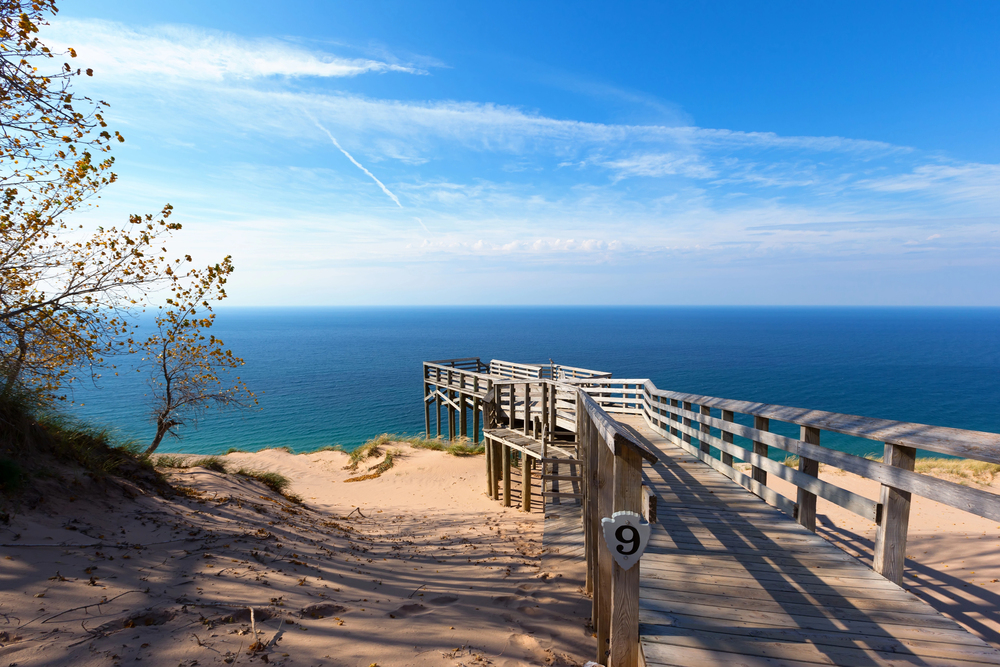
These massive sand mountains along Lake Michigan’s eastern shoreline rise 450 feet above the water, creating one of the most dramatic landscapes in the Midwest. The dunes were formed by glacial sand deposits over thousands of years, constantly reshaped by wind and weather.
Visitors can hike challenging trails through the towering dunes or tackle the famous “Dune Climb”—a steep ascent that rewards persistent climbers with spectacular views of Lake Michigan’s Caribbean-blue waters. The surrounding national lakeshore includes 65 miles of shoreline, dense forests, inland lakes, and historic farm districts.
Like Travel Pug’s content? Follow us on MSN.
Apostle Islands
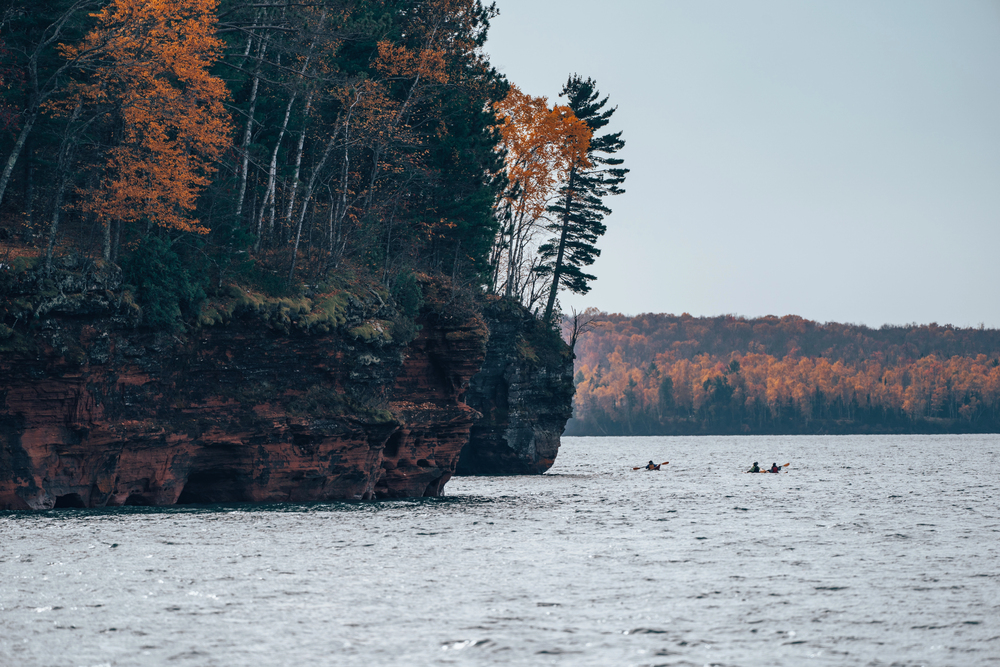
Wisconsin’s northernmost edge features this archipelago of 22 islands scattered across Lake Superior’s crystal-clear waters. The islands are famous for their red sandstone sea caves, which transform into ice caves during harsh winters when lake water freezes into stunning formations.
Summer visitors can explore the islands by kayak, paddling through natural stone arches and into caverns carved by centuries of wave action. The islands also boast more historic lighthouses than any other location in the National Park System—each with its own fascinating story of shipwrecks and survival.
Pictured Rocks
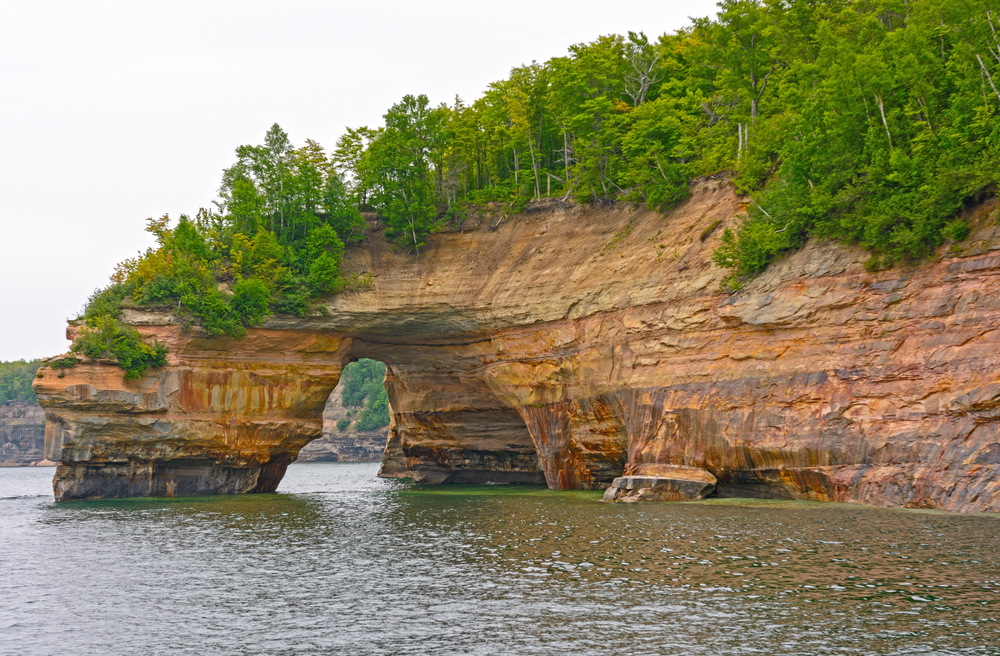
Michigan’s Upper Peninsula contains this 42-mile stretch of multicolored sandstone cliffs rising directly from Lake Superior. The mineral-stained rock faces display vivid streaks of red, orange, blue, green, and brown—creating natural murals that change appearance with shifting sunlight.
Waterfalls cascade directly into the lake from the cliff tops, while caves and arches punctuate the shoreline. Boat tours offer the best views of formations like Lovers’ Leap, Miners Castle, and the stunning Chapel Rock, with its lone pine tree growing atop an isolated stone pillar.
Niagara Falls
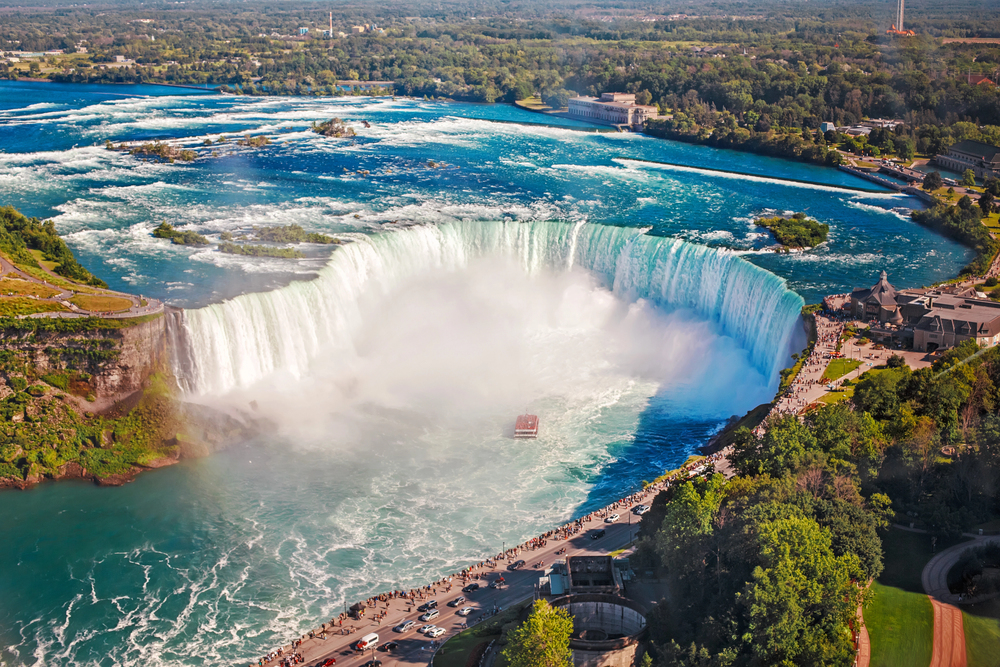
The thundering meeting point between Lakes Erie and Ontario creates one of the world’s most famous natural attractions. Over 3,000 tons of water crash over the falls every second, creating a perpetual mist that rises hundreds of feet into the air.
The Canadian side offers panoramic views of both the American Falls and the larger Horseshoe Falls, along with attractions like the Journey Behind the Falls tunnel system. The less developed American side provides a more natural experience at Niagara Falls State Park, designed by landscape architect Frederick Law Olmsted to showcase the falls’ raw power.
Like Travel Pug’s content? Follow us on MSN.
Presque Isle
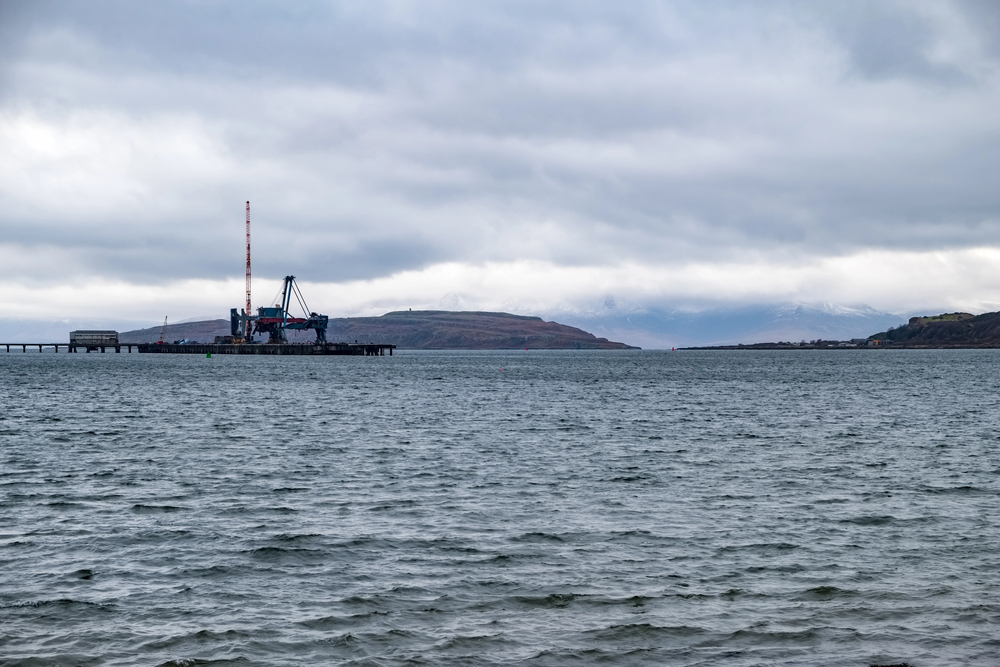
This curved sandy peninsula extends into Lake Erie near Erie, Pennsylvania, creating a natural harbor that’s played a crucial role in Great Lakes shipping and naval history. The park features seven miles of beaches, each with its own character—from the busy swimming areas of Beach 6 to the quieter, natural shorelines on the lake-facing side.
Inland lagoons and marshes provide habitat for over 320 bird species, making it a nationally recognized birding hotspot. Visitors can explore 13 miles of trails or bike the perimeter road while enjoying views of the Erie skyline across the bay.
Toronto Islands
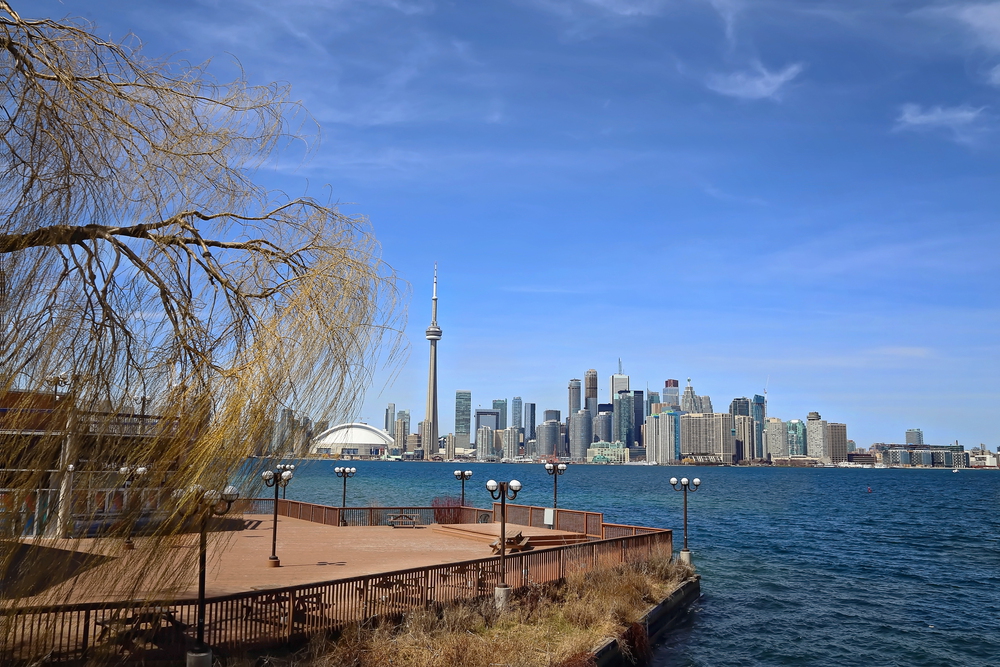
Just a short ferry ride from downtown Toronto, this car-free archipelago offers an immediate escape from urban life with stunning views of Lake Ontario and the city skyline. The 15 interconnected islands feature sandy beaches, hidden coves, and meandering canals lined with cottage communities that date back to the early 1900s.
Centreville Amusement Park on Centre Island has entertained families for generations with its vintage rides and tranquil swan boats. The islands’ western edge includes clothing-optional Hanlan’s Point Beach, while the eastern section houses a small airport alongside protected wetlands teeming with wildlife.
Door County
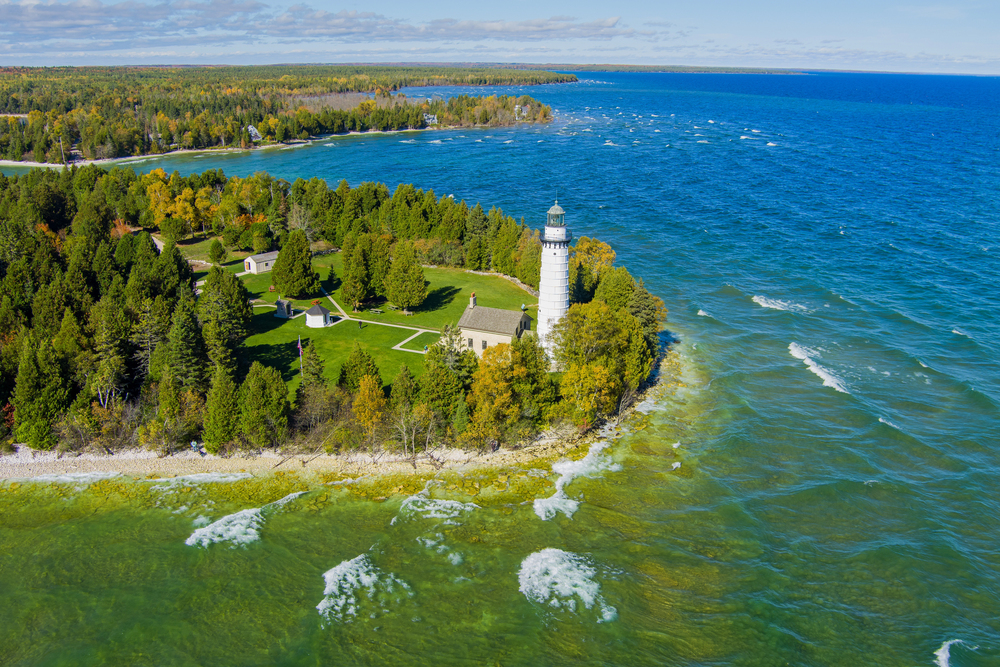
Wisconsin’s “thumb” juts into Lake Michigan, creating a 70-mile peninsula dotted with cherry orchards, artist colonies, and historic fishing villages. The region’s Scandinavian heritage is evident in traditional fish boils—outdoor cooking spectacles where whitefish, potatoes, and onions are prepared in massive kettles over open flames.
The peninsula’s eastern side faces Lake Michigan with dramatic limestone bluffs, while the western shore along Green Bay offers calmer waters and spectacular sunsets. Five state parks protect the peninsula’s most scenic areas, including Peninsula State Park with its 1860s Eagle Bluff Lighthouse.
Like Travel Pug’s content? Follow us on MSN.
Isle Royale
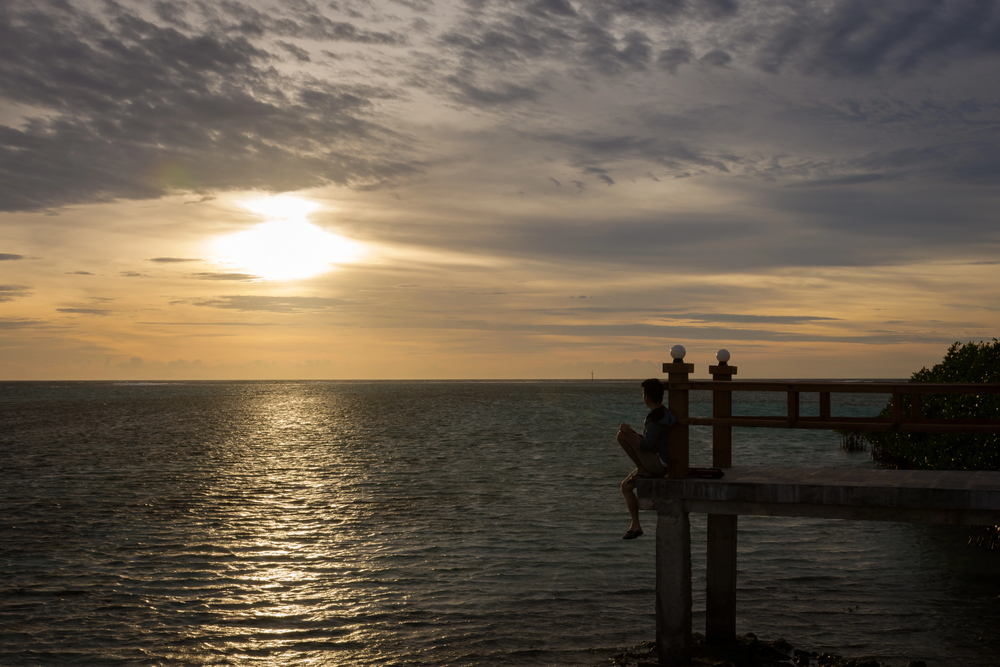
America’s least-visited national park sits in Lake Superior’s northwestern waters, accessible only by boat or seaplane during its limited May-to-October season. This isolation has created an unparalleled wilderness experience across the 45-mile-long island and its 450 surrounding smaller islands.
The park is famous for its wolf and moose populations—subjects of the world’s longest-running predator-prey study. Backpackers can explore over 165 miles of trails through dense forests and along rocky shorelines, where they might spot the remains of shipwrecks visible through Superior’s clear waters.
Thousand Islands
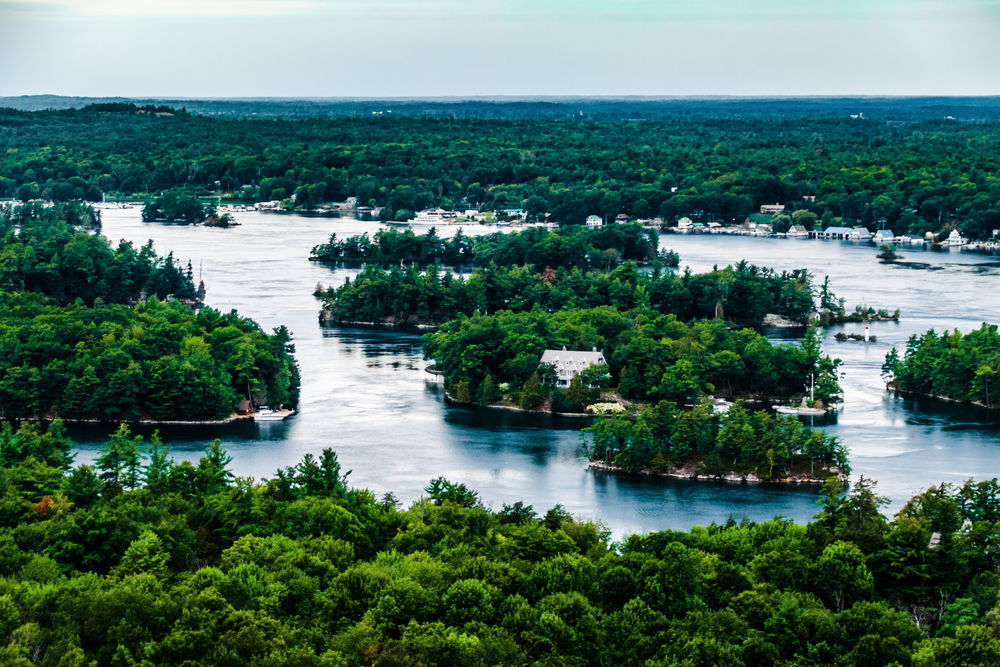
The meeting point of Lake Ontario and the St. Lawrence River contains this archipelago of over 1,800 islands straddling the U.S.-Canadian border. Many islands feature historic cottages and elaborate mansions—including the famous Boldt Castle, an enormous stone structure built by hotel magnate George Boldt as a testament to his love for his wife.
Local boats navigate narrow channels between islands that range from tiny rock outcroppings to larger inhabited islands with their own communities. The region gave birth to the famous salad dressing when a fishing guide’s wife created the recipe for shore dinners in the early 1900s.
Manitoulin Island
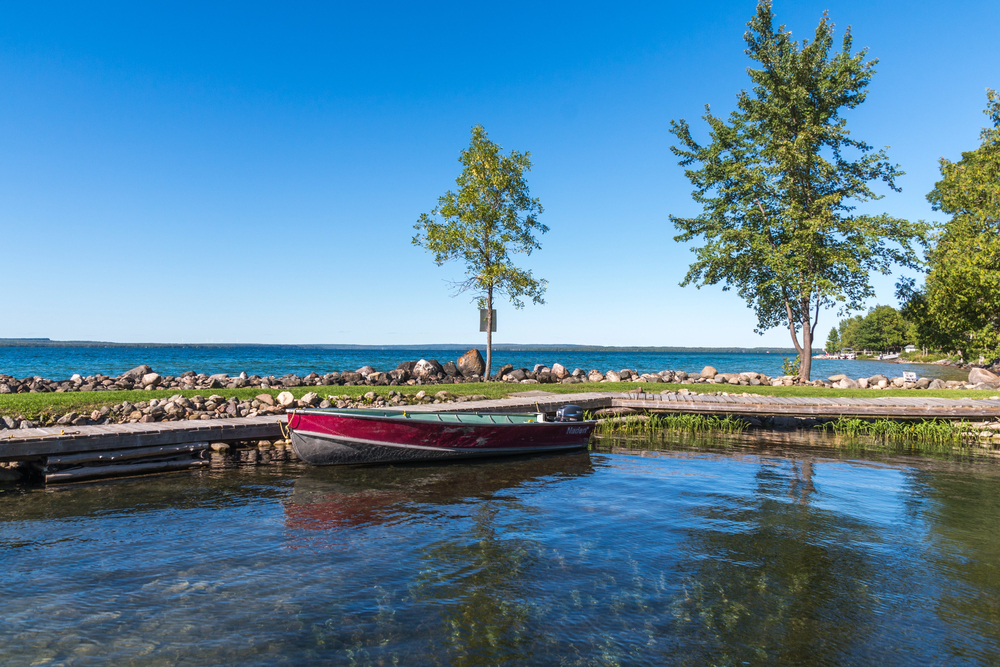
The world’s largest freshwater island sits at the top of Lake Huron, creating an expansive landscape of forests, inland lakes, and limestone formations. The island contains over 100 freshwater lakes of its own—several with their own islands, creating islands within islands. Indigenous Anishinaabe culture remains vibrant across Manitoulin, with powwows and cultural events throughout the summer months.
The island’s Cup and Saucer Trail leads hikers along dramatic cliffs with panoramic views of the North Channel, while the Bridal Veil Falls creates a perfect natural swimming pool beneath its cascading waters.
Like Travel Pug’s content? Follow us on MSN.
Chicago Lakefront
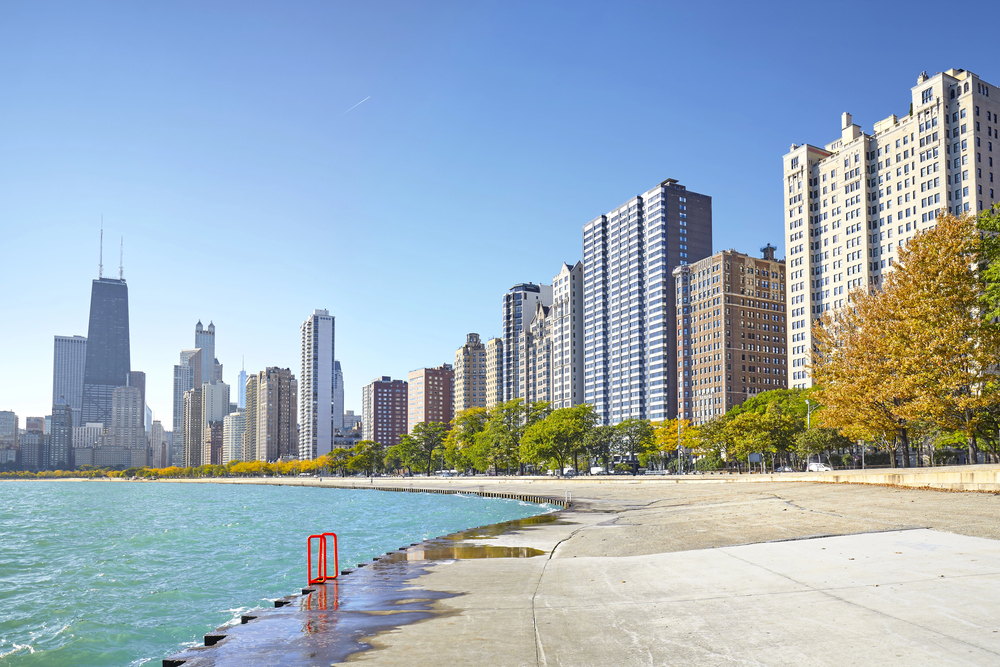
Lake Michigan’s southwestern shore hosts one of America’s most impressive urban waterfronts, with 26 miles of public beaches, harbors, and parkland. The lakefront path connects diverse neighborhoods while offering spectacular views of Chicago’s skyline. Navy Pier extends half a mile into the lake, featuring amusement rides, restaurants, and boat tours.
Further north, historic Montrose Harbor provides a quieter experience with bird sanctuaries and community gardens. The lakefront hosts major events throughout the summer months, including the Chicago Air and Water Show, which draws millions of spectators to watch aerial demonstrations over the water.
Grand Haven
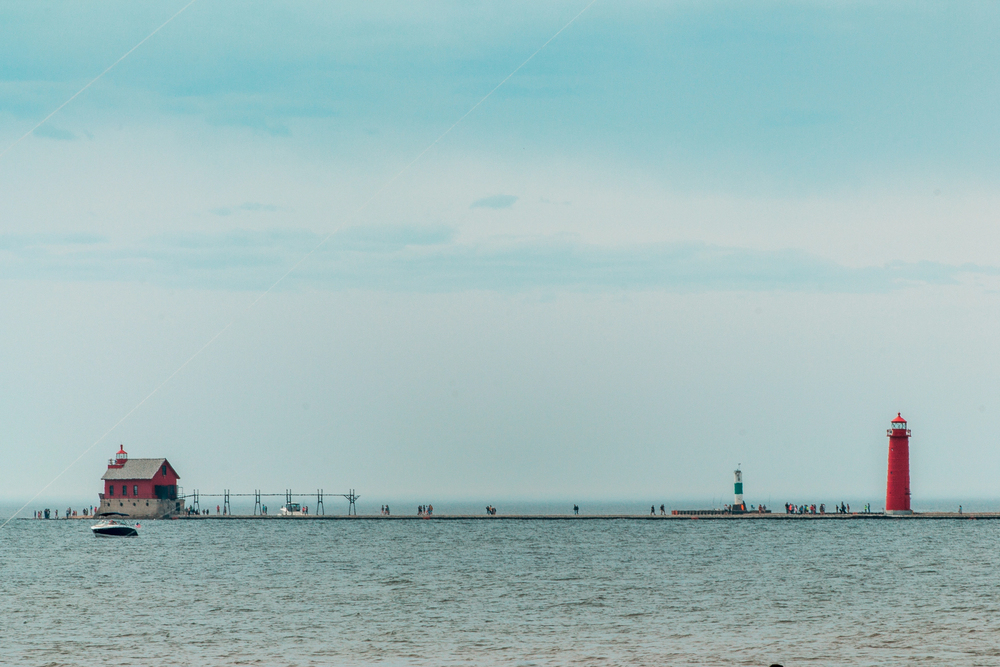
Michigan’s western shore contains this classic beach town centered around a historic pier and red lighthouse that’s become an iconic Lake Michigan image. The town’s musical fountain performs synchronized water and light shows set to music each summer evening—a tradition since 1963.
Grand Haven State Park’s sugar-sand beach regularly ranks among America’s best freshwater beaches, while nearby dunes provide challenging hikes with lake views. The town serves as headquarters for the U.S. Coast Guard’s Great Lakes operations, celebrated each summer during the Coast Guard Festival when ships from across the Great Lakes gather in the harbor.
Rochester Embayment
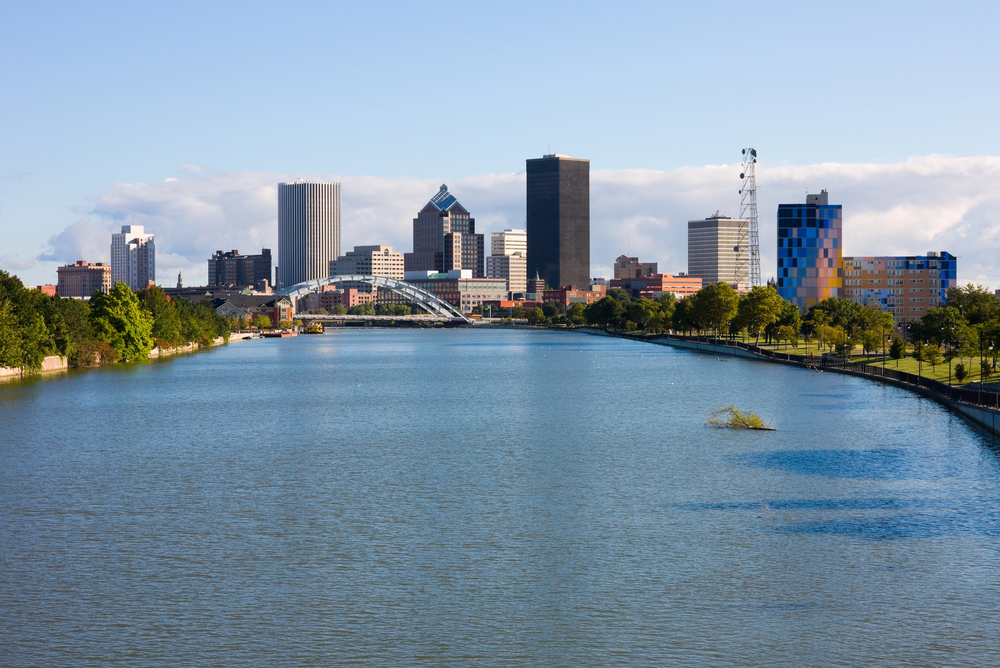
Lake Ontario’s southern shore features this complex ecosystem where the Genesee River meets the lake through a series of wetlands, beaches, and bluffs. The area includes Ontario Beach Park with its historic 1905 Dentzel carousel and Charlotte Pier lighthouse.
Nearby Durand Eastman Park contains steep wooded slopes and hidden water features, inspiring local ghost legends, including the famous “White Lady,” said to search for her missing daughter. The river’s final stretch through downtown Rochester includes dramatic High Falls and a revitalized waterfront district with restaurants overlooking the harbor where ships once delivered goods from across the Great Lakes.
Like Travel Pug’s content? Follow us on MSN.
Georgian Bay
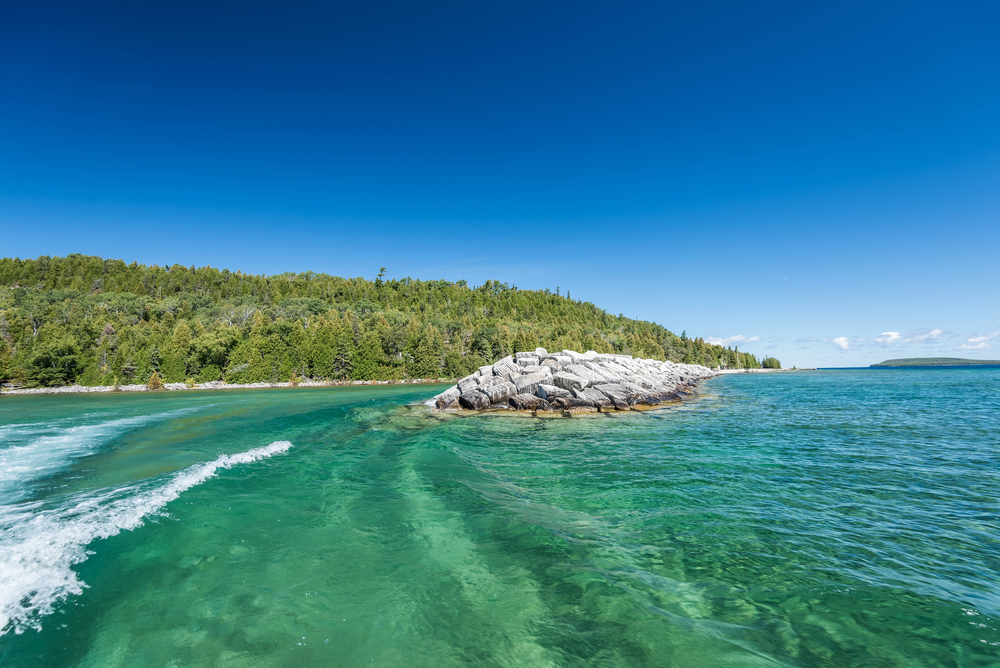
This massive bay extending from Lake Huron contains some of the Great Lakes’ most pristine waters and striking landscapes. The eastern shore features the world’s largest freshwater archipelago—30,000 Islands that create a maze of channels and isolated bays perfect for kayaking adventures.
The bay’s northern section includes Killarney Provincial Park’s white quartzite mountains rising from crystal-clear waters. Along the western “Bruce Peninsula,” ancient cedar trees cling to limestone cliffs that plunge directly into turquoise waters. The region’s shipwrecks attract divers from across North America, while its dark skies have earned international recognition for stargazing.
The Legacy Lives On
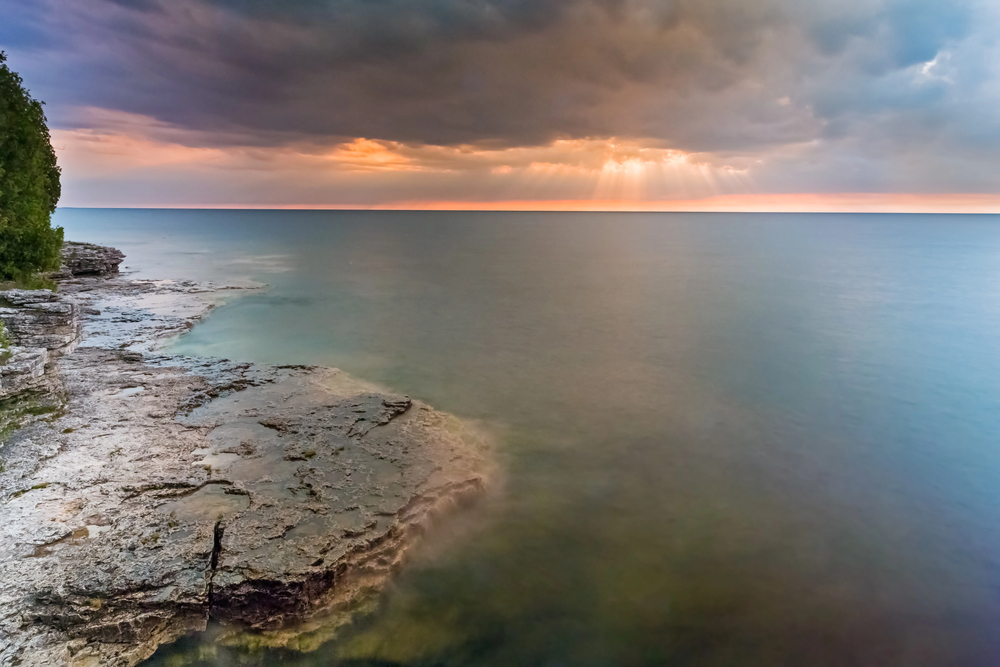
The Great Lakes continue to shape the culture, economy, and environment of North America’s heartland in profound ways. From industrial ports to wilderness sanctuaries, these inland seas offer experiences found nowhere else—where ocean-like horizons meet freshwater ecosystems.
Modern visitors follow paths established by indigenous peoples, voyageurs, and immigrants who were drawn to these waters centuries ago. Whether you’re watching a sunset from a dune summit, exploring an island wilderness, or enjoying urban beaches, the Great Lakes provide a distinctly American landscape where water and land create endless possibilities for discovery.
More from Travel Pug

- Cities Growing so Fast You Won’t Recognize Them in 10 Years
- 13 Destinations Where Tourists Regularly Regret Their Trip
- 16 U.S. Cities That Are Quietly Becoming Travel Hotspots
- Where to Travel If You Love Long Bus Rides and Daydreams
- 20 Cities Perfect for Solo Travelers Who Crave Adventure & Culture
Like Travel Pug’s content? Follow us on MSN.
